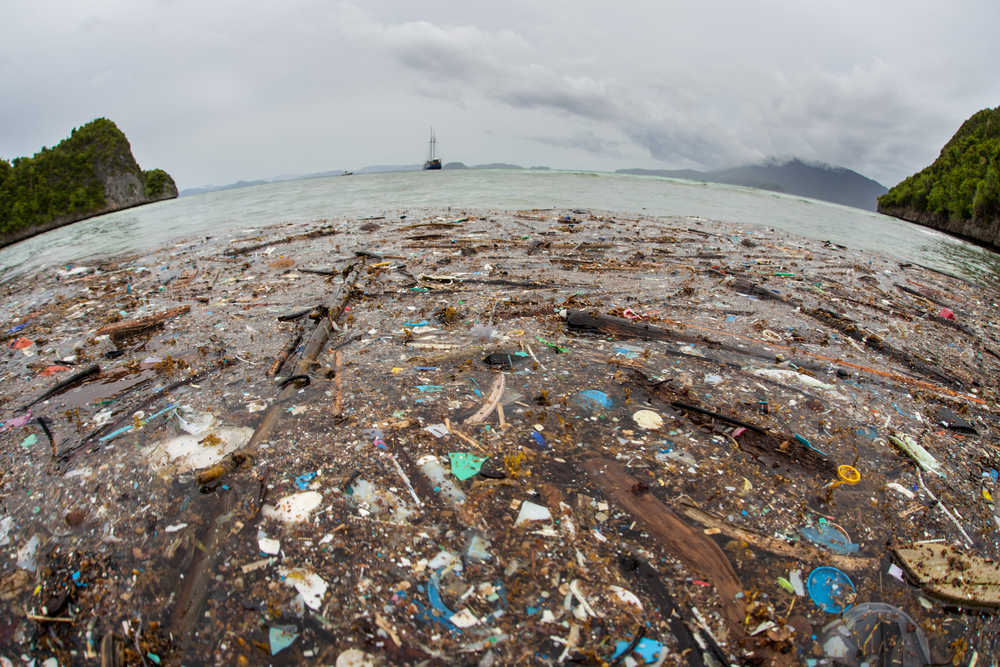Microplastics Are Everywhere — and That Likely Includes Your Poop

Tiny particles of plastic are seemingly everywhere: So-called microplastics have been found in the ocean, tap water, bottled water and soil. Now, they've even been found in our poop.
In a small, first-of-its-kind study, researchers have found microplastics in stool samples from people around the world.
The study "confirms what we have long suspected, that plastics ultimately reach the human gut," study lead author Dr. Philipp Schwabl, a physician scientist at the Medical University of Vienna's Division of Gastroenterology and Hepatology, said in a statement.
Little is known about the health effects of microplastics, but there's concern that the pervasive plastics may affect our gastrointestinal (GI) health and possibly reach other organs. "Now that we have first evidence for microplastics inside humans, we need further research to understand what this means for human health," Schwabl said. [9 Disgusting Things That the FDA Allows in Your Food]
Schwabl presented his findings today (Oct. 22) at UEG Week in Vienna, a European gastroenterology meeting. The findings have not yet been published in a peer-reviewed journal.
Microplastic pollution
Microplastics are bits of plastic that measure under 0.2 inches (5 millimeters) in length — about the size of a sesame seed or smaller. They're formed when larger pieces of plastic pollution break down. Microplastics can wind up in the oceans or the Great Lakes, where the particles are ingested by aquatic life and enter the food chain. Indeed, microplastics have been detected in seafood, including tuna, lobster and shrimp, the researchers said. Humans are also likely exposed to microplastics as a result of plastic contamination from food packaging or processing.
Still, data on human exposure to microplastics is scarce, and the new study is the first to quantify the particles in human stool, the researchers said.
Sign up for the Live Science daily newsletter now
Get the world’s most fascinating discoveries delivered straight to your inbox.
In the study, the researchers analyzed stool samples from eight healthy volunteers living in eight countries around the world: Finland, Italy, Japan, the Netherlands, Poland, Russia, the United Kingdom and Austria.
Using a new type of analytical procedure, the researchers found microplastics in all of the stool samples they received. The most common types of plastic found were polypropylene and polyethylene terephthalate — two plastics that have a wide range of uses, including plastic bottles. On average, the researchers detected 20 microplastic particles per 10 grams of stool.
The participants were not told to eat any specific diet, but food diaries showed that six of the participants consumed fish in the week before giving a stool sample, and all of the participants consumed at least some plastic-wrapped foods or drank from plastic bottles.
Although the study was small, the fact that microplastics were found in all of the samples "indicates a high likelihood that also many other people involuntarily ingest microplastics," Schwabl told Live Science.
The researchers are planning to conduct a larger study to confirm the findings, and to see if they can identify factors linked with microplastics in stool, such as a person's diet, lifestyle or where they live, Schwabl said.
The researchers are also planning further studies to investigate the effects of microplastics on human health. Animal studies suggest that microplastics can enter the bloodstream and lymphatic system, and may reach the liver, Schwabl said. In addition, microplastics may cause damage to the intestines and affect how well the body absorbs nutrients, he said.
Originally published on Live Science.

Rachael is a Live Science contributor, and was a former channel editor and senior writer for Live Science between 2010 and 2022. She has a master's degree in journalism from New York University's Science, Health and Environmental Reporting Program. She also holds a B.S. in molecular biology and an M.S. in biology from the University of California, San Diego. Her work has appeared in Scienceline, The Washington Post and Scientific American.










